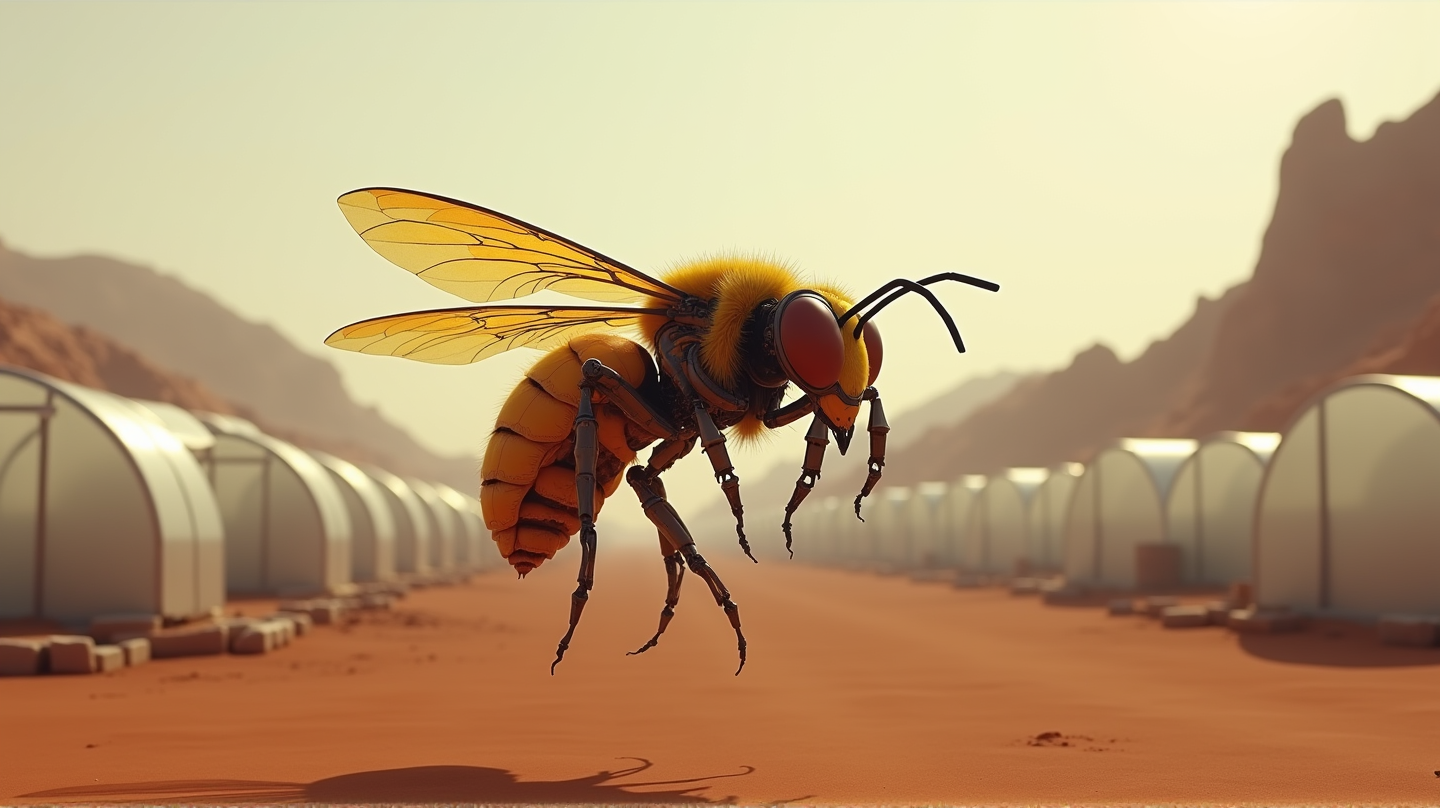In a visionary leap towards the future, engineers at the Massachusetts Institute of Technology (MIT) have embarked on a groundbreaking project—a tiny, bee-like robot capable of performing an astoundingly rapid 400 wing flaps per second. This innovative creation, headed by Kevin Chen at MIT’s Soft and Micro Robotics Lab, is more than just an engineering marvel; it may hold the key to supporting life on other planets.
A Mechanical Marvel with Incredible Agility
The robotic bee is engineered to emulate the flight maneuvers of natural bees, flapping its delicate wings at incredible speeds. Designed for environments where real bees would struggle to survive—indoor farms and extraterrestrial locales like Mars—this mechanical pollinator could be revolutionary.
Yi-Hsuan Hsiao, a PhD student part of the project, emphasizes the bee’s potential in extraterrestrial settings, stating, “If you’re going to grow something on Mars, you probably don’t want to bring a lot of natural insects to do the pollination. That’s where our robot could potentially come into play.”
Tiny Titan with Mighty Muscles
Weighing less than a paperclip, the robot employs soft muscles that expand and contract swiftly, achieving remarkable feats of flight. The research team is simultaneously designing a more energy-efficient variant that combines flying and hopping. This smaller version, less than human thumb in size, consumes a fraction of the energy, allowing it to pack a punch well beyond its weight class. Imagine a machine that carries loads ten times its weight—quite a feat for something so small.
Challenges and Future Prospects
Presently, the robots are tethered by wires, as integrating batteries remains a formidable challenge. As a tentative glimpse into the future, Kevin Chen predicts that operational versions of such robots may become a reality within the next 20–30 years. Their research may lay the groundwork for the next generation of micro-robots.
As stated in Notebookcheck, such progress highlights a growing trend in robotic developments inspired by natural phenomena, promising a symbiotic relationship between technology and biology.
The Road Ahead
Whether in greenhouses on Earth or colonies on the Martian surface, MIT’s robotic bee represents a new dawn in artificial pollination. Could this tiny titan spearhead a new era in interplanetary agriculture? Researchers at MIT certainly believe so.
With a promising future ahead, the buzz around this mechanical marvel is sure to grow, one wing flap at a time.
